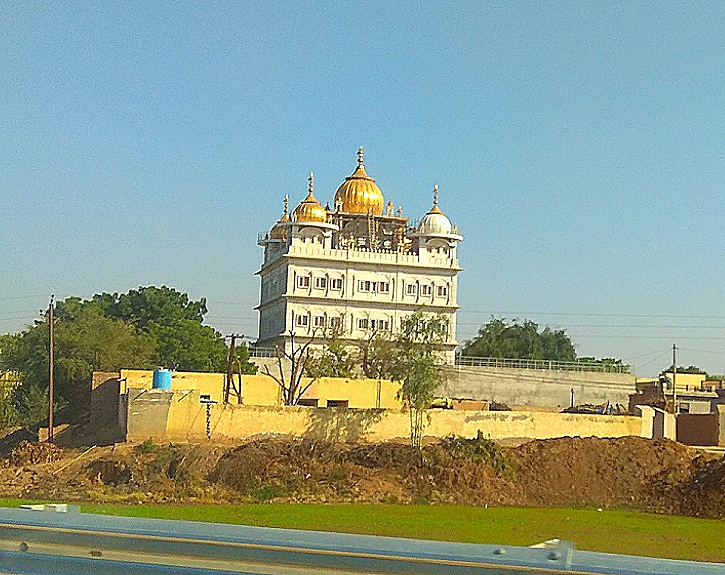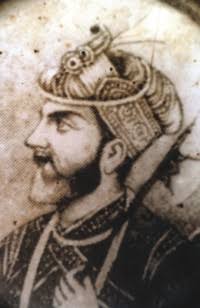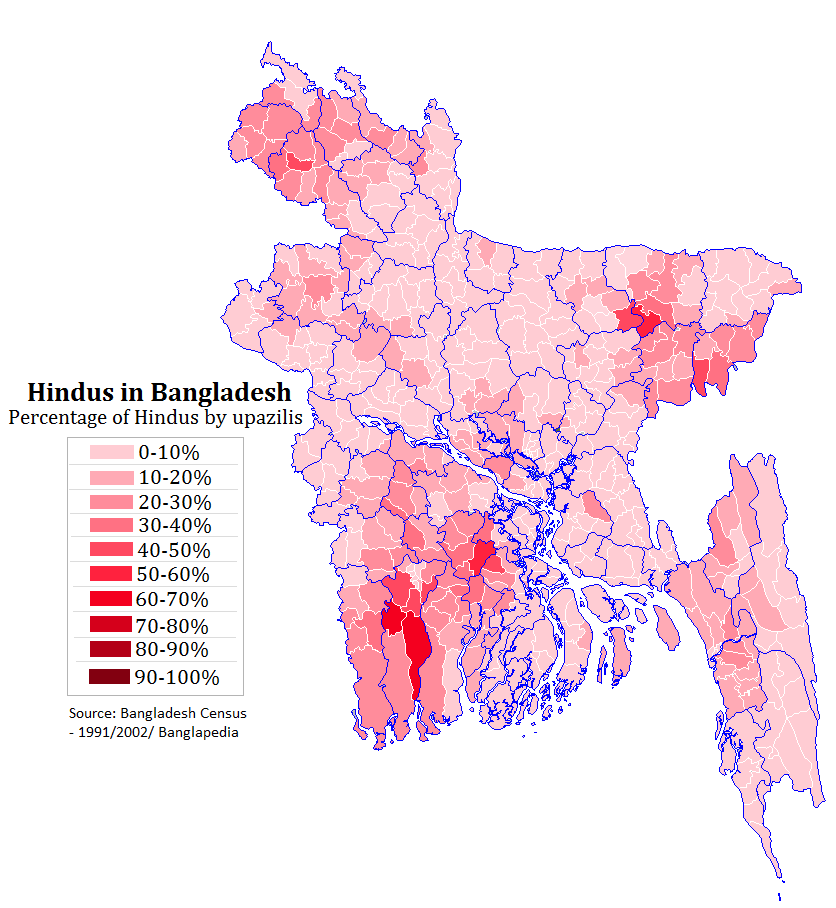|
Bijaynagar Upazila
Bijoynagar ( bn, বিজয়নগর) is an upazila of Brahmanbaria District in the Division of Chittagong, Bangladesh. Geography Bijoynagar has 37,977 households and a total area of . History Previously it was a part of Tripura District. In 1618 CE during the reign of Jahangir, his commander in chief Daud Khan occupied this area from the king of Tripura. This locality was renamed as Daudpur Pargana after his name. After the struggle he ( Daud Khan) settled here as administrative lord. This pargana was annexed with the pargana Jalalpur (Mymensingh). The British came into Bengal as Dewan (Revenue collector) in 1765 C.E. They created many districts for their administrative purposes. Again they established Tripura as District in 1790. Daudpur Pargana was also a part of Mymensingh. In 1860, the government established Brahmanbaria as sub-division. Daudpur, Sarail, Bejura and Haripur were separated from Mymensingh and submitted to Brahmanbaria. Ershad government promoted Brahman ... [...More Info...] [...Related Items...] OR: [Wikipedia] [Google] [Baidu] |
Vijainagar
Vijaynagar (also written Sri Vijaynagar or Sri Bijaynagar) or Vijaynagar is a town and a municipality in Sri Ganganagar district in the Indian state of Rajasthan. Demographics India census, Sri Bijaynagar had a population of 17,867. Males constitute 54% of the population and females 46%. Sri Bijaynagar has an average literacy rate of 62%, higher than the national average of 59.5%: male literacy is 69%, and female literacy is 54%. In Sri Bijaynagar, 16% of the population is under 6 years of age. Sri Vijaynagar Tehsil is the one of nine tehsils of Sri Ganganagar district of Rajasthan, India. It is located in the southern part of District Sri Ganganagar. It is bordered by Anoopgarh tehsil in the west, by Raisinghnagar tehsil in the north, Suratgarh tehsil in the east, and Bikaner district in the south. History Earlier it was area of sandy dunes, horny shrubs and trees. Arrival of waters of Gang canal and Indira Gandhi Canal by Anoopgarh branch has important role of flora an ... [...More Info...] [...Related Items...] OR: [Wikipedia] [Google] [Baidu] |
Upazilas Of Bangladesh
An ''upazila'' ( bn, উপজেলা, upôzela, lit=sub-district pronounced: ), formerly called ''thana'', is an administrative region in Bangladesh, functioning as a sub-unit of a district. It can be seen as an analogous to a county or a borough of Western countries. Rural upazilas are further administratively divided into union council areas (union parishads). Bangladesh ha495 upazilas(as of 20 Oct 2022). The upazilas are the second lowest tier of regional administration in Bangladesh. The administrative structure consists of divisions (8), districts (64), upazilas (495) and union parishads (UPs). This system of devolution was introduced by the former military ruler and president of Bangladesh, Lieutenant General Hossain Mohammad Ershad, in an attempt to strengthen local government. Below UPs, villages (''gram'') and ''para'' exist, but these have no administrative power and elected members. The Local Government Ordinance of 1982 was amended a year later, redesignatin ... [...More Info...] [...Related Items...] OR: [Wikipedia] [Google] [Baidu] |
Chittagong Division
Chittagong Division, officially known as Chattogram Division, is geographically the largest of the eight administrative divisions of Bangladesh. It covers the south-easternmost areas of the country, with a total area of and a population at the 2011 census of 28,423,019. The administrative division includes mainland Chittagong District, neighbouring districts and the Chittagong Hill Tracts. Chittagong Division is home to Cox's Bazar, the longest natural sea beach in the world; as well as St. Martin's Island, Bangladesh's sole coral reef. History The Chittagong Division was established in 1829 to serve as an administrative headquarters for five of Bengal's easternmost districts, with the Chittagong District serving as its headquarters. During the East Pakistan period, the division's Tippera district was renamed to Comilla District in 1960. In 1984, fifteen districts were created by separating and reducing the original five districts of Chittagong, Comilla, Hill Tracts, Noakhal ... [...More Info...] [...Related Items...] OR: [Wikipedia] [Google] [Baidu] |
Brahmanbaria District
Brahmanbaria ( bn, ব্রাহ্মণবাড়িয়া, translit=Brahmôṇbaṛiya) is a district in eastern Bangladesh located in the Chittagong Division. Geographically, it is mostly farmland and is topographically part of the Gangetic Plain. It is bounded by the districts of Kishoreganj and Habiganj to the north, Narsingdi District and Narayanganj to the west, Comilla to the south, and the Indian state of Tripura to its east. It was a part of Comilla until 15 February 1984.Musa, Muhammad. Brahmanbariar Itibrittyo, Shetu Prokashoni, Brahmanbaria,1998. History Brahmanbaria was a part of Samatata region of the ancient Bengal. The area Syed Mahmud resided in was named Kazipara (Kazi being a variant of Qadi) after him, and his mazar (mausoleum) remains there. The leader of the Baro-Bhuiyan zamindars, Isa Khan, had his first and temporary capital situated in Sarail. During the Mughal era, Brahmanbaria was famous for producing quality cloth muslin. Brahmanbaria wa ... [...More Info...] [...Related Items...] OR: [Wikipedia] [Google] [Baidu] |
Bangladesh Standard Time
Bangladesh (}, ), officially the People's Republic of Bangladesh, is a country in South Asia. It is the List of countries and dependencies by population, eighth-most populous country in the world, with a population exceeding 165 million people in an area of . Bangladesh is among the List of countries and dependencies by population density, most densely populated countries in the world, and shares land borders with India to the west, north, and east, and Myanmar to the southeast; to the south it has a coastline along the Bay of Bengal. It is narrowly separated from Bhutan and Nepal by the Siliguri Corridor; and from China by the Indian state of Sikkim in the north. Dhaka, the capital and list of cities and towns in Bangladesh, largest city, is the nation's political, financial and cultural centre. Chittagong, the second-largest city, is the busiest port on the Bay of Bengal. The official language is Bengali language, Bengali, one of the easternmost branches of the Indo-Europe ... [...More Info...] [...Related Items...] OR: [Wikipedia] [Google] [Baidu] |
Upazila
An ''upazila'' ( bn, উপজেলা, upôzela, lit=sub-district pronounced: ), formerly called ''thana'', is an administrative region in Bangladesh, functioning as a sub-unit of a district. It can be seen as an analogous to a county or a borough of Western countries. Rural upazilas are further administratively divided into union council areas (union parishads). Bangladesh ha495 upazilas(as of 20 Oct 2022). The upazilas are the second lowest tier of regional administration in Bangladesh. The administrative structure consists of divisions (8), districts (64), upazilas (495) and union parishads (UPs). This system of devolution was introduced by the former military ruler and president of Bangladesh, Lieutenant General Hossain Mohammad Ershad, in an attempt to strengthen local government. Below UPs, villages (''gram'') and ''para'' exist, but these have no administrative power and elected members. The Local Government Ordinance of 1982 was amended a year later, redesignatin ... [...More Info...] [...Related Items...] OR: [Wikipedia] [Google] [Baidu] |
Jahangir
Nur-ud-Din Muhammad Salim (30 August 1569 – 28 October 1627), known by his imperial name Jahangir (; ), was the fourth Mughal Emperor, who ruled from 1605 until he died in 1627. He was named after the Indian Sufi saint, Salim Chishti. Early life Prince Salim was the third son born to Akbar and his favourite Queen Consort, Mariam-uz-Zamani in Fatehpur Sikri on 30 August 1569. He had two elder brothers, Hassan Mirza and Hussain Mirza, born as twins to his parents in 1564, both of whom died in infancy. Since these children had died in infancy, Akbar sought the blessing of holy men for an heir-apparent to his empire. When Akbar was informed of the news that his chief Hindu wife was expecting a child, an order was passed for the establishment of a royal palace in Sikri near the lodgings of Shaikh Salim Chisti, where the Empress could enjoy the repose being in the vicinity of the revered saint. Mariam was shifted to the palace established there and during her pregnancy, Akba ... [...More Info...] [...Related Items...] OR: [Wikipedia] [Google] [Baidu] |
Hussain Muhammad Ershad
Lt. Gen. Hussain Muhammad Ershad ( bn, হুসেইন মুহাম্মদ এরশাদ; 1 February 1930 – 14 July 2019) was a Bangladeshi Army Chief politician who served as the President of Bangladesh from 1983 to 1990, a time many consider to have been a military dictatorship. He seized power as head of the army during a bloodless coup against President Abdus Sattar on 24 March 1982 (by imposing martial law and suspending the Constitution). He declared himself President in 1983, and subsequently won the controversial 1986 Bangladeshi presidential election. Despite claims to have legitimately won the 1986 election, many consider his regime as an era of military dictatorship. Ershad served in the Presidential office until 1990, when he was forced to resign following a popular pro-democracy mass uprising led by Khaleda Zia and Sheikh Hasina. Ershad founded the Jatiya Party in 1986 and became a Member of Parliament for that party in the constituency of Rangpur-3 i ... [...More Info...] [...Related Items...] OR: [Wikipedia] [Google] [Baidu] |
Islam In Bangladesh
Islam is the state religion of the People's Republic of Bangladesh. According to the 2022 census, Bangladesh had a population of about 150 million Muslims, or 91.04% of its total population of million. The majority of Bangladeshis are Sunni, and follow the Hanafi school of fiqh. Religion is an integral part of Bangladeshi identity. Despite being a Muslim-majority country, Bangladesh is a ''de facto'' secular state. In the 9th century, Arab Muslims established commercial as well as religious connection within the region before the conquest, mainly through the coastal regions as traders and primarily via the ports of Chittagong. Region was largely inhabited by different animistic tribes. Arab navigation in the region was the result of the Muslim reign over the Indus delta. In the early 13th century, Muhammad bin Bakhtiyar Khalji conquered Western and part of Northern Bengal, and established the first Muslim kingdom in Bengal. Islamic missionaries in India achieved their greatest ... [...More Info...] [...Related Items...] OR: [Wikipedia] [Google] [Baidu] |
Hinduism In Bangladesh
Hinduism is the second largest religious affiliation in People's Republic of Bangladesh, as according to the Official 2022 Census of Bangladesh, approximately just 13.1 million people responded that they were Hindus, constituting 7.95% out of the total population of 165.15 million people. In terms of population, Bangladesh is the third-largest Hindu populated country of the world, just after India and Nepal. Hinduism is the second-largest religion in 61 out of 64 districts of Bangladesh, but there is no Hindu majority district in Bangladesh. Culture In nature, Bangladeshi Hinduism closely resembles the forms and customs of Hinduism practiced in the neighboring Indian state of West Bengal, with which Bangladesh (at one time known as East Bengal) was united until the partition of India in 1947. The vast majority of Hindus in Bangladesh are Bengali Hindus. Goddess ( Devi) – usually venerated as Durga or Kali – is widely revered, often alongside her consort Shiva. The w ... [...More Info...] [...Related Items...] OR: [Wikipedia] [Google] [Baidu] |





